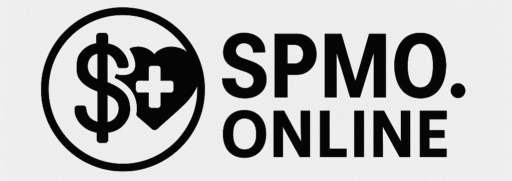Explore the best group health insurance options for small businesses, including HMO, PPO, and HDHP plans, to provide affordable and flexible coverage.
Choosing the right group health insurance is one of the most important decisions a small business owner can make. Providing quality healthcare coverage helps attract and retain top talent and boosts employee satisfaction and productivity. With so many options available, finding a plan that balances cost and coverage can be overwhelming.
Whether you’re prioritizing flexibility, affordability, or comprehensive benefits, understanding the different types of plans is key. In this guide, we’ll explore the top group health insurance options tailored specifically for small businesses, helping you make a smart, informed choice for your team.
Health Maintenance Organisation (HMO) Plans
Health Maintenance Organization (HMO) plans are one of the most popular and cost-effective group health insurance options for small businesses. Under an HMO plan, employees must select a Primary Care Physician (PCP) who becomes their main point of contact for all health-related matters. The PCP coordinates the employee’s care, and referrals are needed to see specialists.
The biggest advantage of an HMO is its affordable premiums, which make it a great choice for small businesses trying to provide quality healthcare coverage on a budget. The HMO model also emphasises preventive care, which can help reduce long-term healthcare costs. Employees often have lower out-of-pocket costs when using in-network doctors and hospitals, making HMO plans accessible and straightforward.
However, one significant downside is the limited flexibility in healthcare provider choices, as employees must stay within the network unless it’s an emergency. This can be restrictive for employees who prefer to see specialists or doctors outside the network. Furthermore, requiring referrals for specialist visits can be seen as a hindrance to those who prefer a more direct approach to healthcare.
Despite these drawbacks, an HMO is an ideal option for small businesses seeking to balance cost savings with the delivery of essential healthcare services.
Preferred Provider Organization (PPO) Plans

Preferred Provider Organization (PPO) plans provide more flexibility compared to HMO plans, making them an attractive option for businesses that want to offer employees more freedom in choosing their healthcare providers.
Unlike HMOS, PPO plans do not require employees to choose a Primary Care Physician (PCP) or obtain a referral to see a specialist. This can particularly appeal to employees who prefer to have control over their healthcare decisions and seek direct access to specialists without intermediary steps.
Another major advantage is the flexible network, allowing employees to see out-of-network providers, though at a higher cost. PPO plans also typically cover a broader range of services, offering more options for hospitals, doctors, and treatment facilities. On the downside, PPO plans come with higher premiums than HMOS, which can make them less cost-effective for small businesses.
The ability to go out-of-network comes at a price, leading to higher out-of-pocket costs for employees. These higher premiums and cost-sharing elements can make PPO plans less affordable for businesses operating with tight budgets. Nonetheless, for companies with a workforce that values autonomy in their healthcare choices, PPOS offers the flexibility and extensive network options that employees appreciate.
Exclusive Provider Organization (EPO) Plans
Exclusive Provider Organization (EPO) plans are a hybrid of PPO and HMO plans, combining some of the best elements of both. Like PPOS, EPO plans allow employees to see specialists without a referral and have a more extensive network than HMOS. However, EPO plans come with a distinct limitation: they require employees to use in-network providers for most non-emergency medical services.
Unlike PPOS, out-of-network care is generally not covered except in emergencies. This restriction can be a disadvantage if an employee has preferred out-of-network doctors or specialists. EPO plans are a great middle ground for small businesses looking to keep premiums lower than PPOS while offering employees more flexibility than HMOS.
They typically provide moderate premiums, making them a viable option for companies that want to balance cost and coverage. One of the advantages of EPOS is that employees are not required to choose a Primary Care Physician (PCP), which can appeal to those who prefer direct access to specialists and a wider range of medical options.
However, the strict in-network requirement can lead to frustration if employees need care outside the network. Ultimately, EPO plans are an excellent option for businesses that want flexibility without the high costs of PPO plans.
High Deductible Health Plans (HDHPs) with Health Savings Accounts (HSAs)
High Deductible Health Plans (HDHPS) are another option that small businesses can consider, especially for those looking to provide cost-effective coverage while offering employees the opportunity to save for medical expenses. As the name suggests, HDHPS come with higher deductibles than traditional health insurance plans, which means employees will need to pay more out-of-pocket for their healthcare before their insurance coverage kicks in.
However, HDHPS offers lower monthly premiums, making them a good choice for businesses looking to keep costs down. To offset the higher deductible, HDHPS are often paired with a Health Savings Account (HSA), allowing employees to save tax-free money for qualified medical expenses.
This combination enables employees to manage their healthcare costs in a way that works best for them, and the HSA offers long-term benefits by enabling funds to roll over from year to year. While the lower premiums make HDHPS appealing to small businesses, the high deductibles may deter some employees who are uncomfortable paying out-of-pocket for routine care.
Moreover, employees may be discouraged from seeking necessary medical attention due to the upfront costs. Despite these challenges, HDHPS with HSAS can be an excellent option for businesses that want to provide their employees with a way to manage healthcare expenses while minimizing the overall cost of coverage.
Small Business Health Options Program (SHOP)
The Small Business Health Options Program (SHOP) was created as part of the Affordable Care Act (ACA) and offers small businesses with fewer than 50 employees an easy way to purchase group health insurance. The SHOP marketplace provides a range of options from different insurers, and companies can choose plans that best meet their employees’ needs.
One of the major benefits of SHOP plans is that they allow businesses to access tax credits to help offset the cost of premiums, making healthcare more affordable for both the business and employees. Additionally, companies can offer their employees a choice of plans, which can help improve employee satisfaction and retention.
Unlike other health insurance plans, SHOP also provides a streamlined process for employers to administer, making it easier to manage employee benefits. However, the SHOP marketplace can be limited in some regions, with fewer insurers offering plans depending on location. Some businesses may find that the available options don’t fully meet their needs, especially in areas with limited competition.
Furthermore, while there are tax benefits to enrolling in SHOP, businesses must meet certain eligibility requirements, such as having fewer than 25 full-time employees. Overall, SHOP plans are an excellent choice for small businesses that want access to a broad range of insurance options and the added benefit of tax credits to help reduce costs.
Catastrophic Health Insurance
Catastrophic health insurance is a plan designed for worst-case scenarios, typically covering extreme medical emergencies and serious health conditions. These plans are ideal for small businesses that need basic health coverage at a low premium cost. Catastrophic insurance is characterized by high deductibles, meaning that employees must pay a significant portion of their medical expenses before the insurance starts to cover the costs.
Once the deductible is met, the plan provides substantial coverage for emergencies, hospital stays, and certain preventive services. While the low premiums make it an affordable option for businesses, catastrophic plans offer minimal coverage for routine healthcare, such as doctor visits, prescription drugs, and preventive care.
Employees may find themselves paying out-of-pocket for most of their healthcare needs, which can be a disadvantage if they require frequent medical attention. Catastrophic plans also tend to have fewer benefits overall, which may make them less appealing for employees who value comprehensive coverage.
However, these plans benefit businesses that want to provide basic coverage while minimizing the cost of premiums. They offer a safety net for employees in the event of a major health crisis. Still, they are no substitute for more comprehensive insurance plans covering ongoing healthcare needs.

